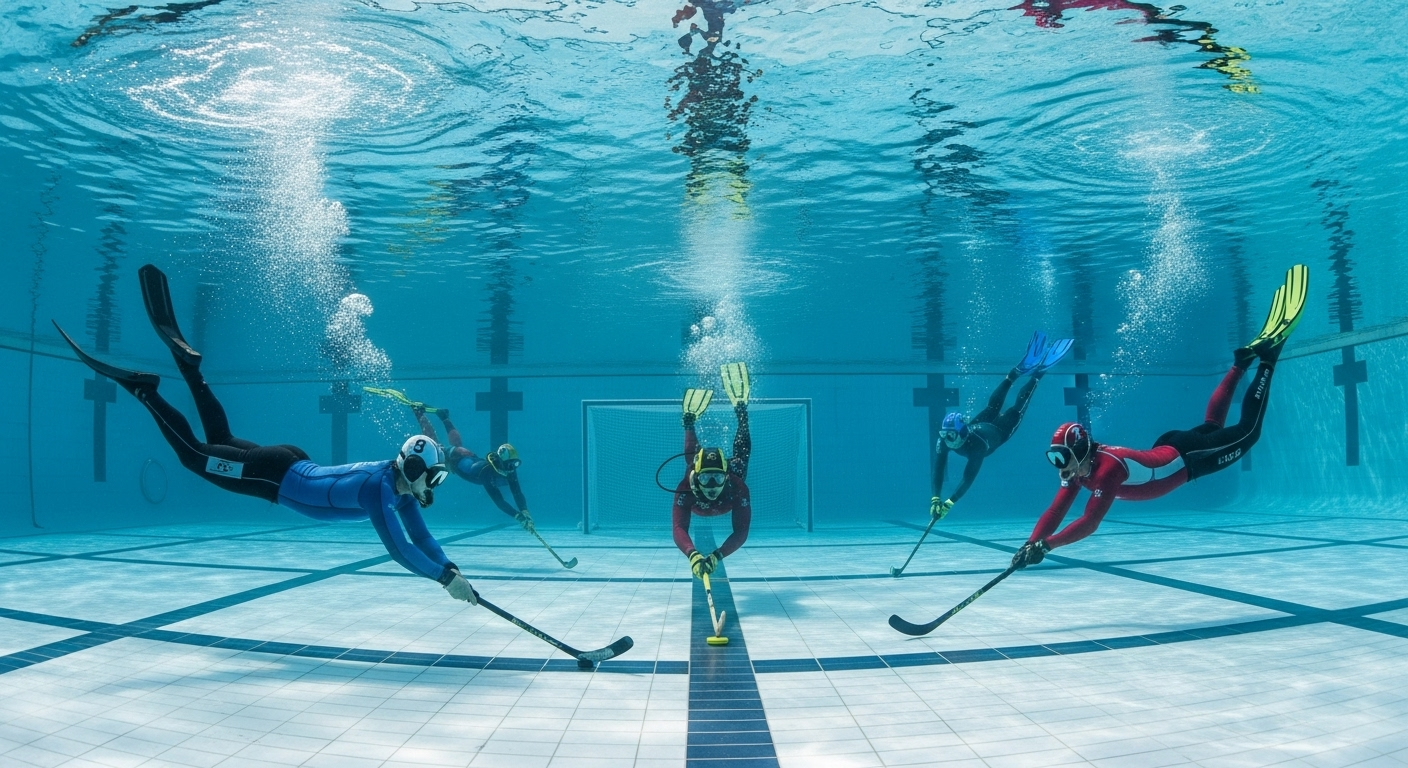The Intricacies of Underwater Hockey: A Deep Dive Into an Unconventional Sport
In the vast expanse of global sports, few activities combine swimming ability, strategic acumen, and physical endurance quite like underwater hockey. This niche yet engaging sport, often overlooked in the shadow of its land-based counterpart, offers a unique blend of excitement and challenge.

Underwater hockey, also known as Octopush in the United Kingdom, presents a captivating fusion of aquatic prowess and strategic gameplay. Originating in the mid-20th century as a method to keep divers fit during the off-season, it has morphed into a competitive sport with official championships and a dedicated following.
The Genesis of Underwater Hockey
The sport was conceived by Alan Blake, a British diver, in 1954. Blake sought a way to keep his fellow club members fit during the winter months when sea diving was not practical. The solution was a unique game that blended elements of hockey, snorkeling, and swimming in a dynamic underwater environment.
The Anatomy of the Game
Underwater hockey is played at the bottom of a swimming pool, typically between two teams of six. The objective is to maneuver a puck along the pool floor into the opposing team’s goal using a short stick. But, with players needing to surface for air and the puck’s unpredictable behavior in water, the game requires strategic coordination and impressive breath control.
The Beauty of Underwater Hockey
The sport’s unique appeal lies in its simultaneous demands for physical fitness, teamwork, and tactical thinking. Players need to be strong swimmers, capable of quick dives and sudden changes of direction while conserving their breath. There’s also a strong emphasis on teamwork: planning plays, forming defensive lines, and coordinating attacks are crucial to success.
The Challenges and Rewards
Despite its relative obscurity, underwater hockey offers a range of benefits. It’s an excellent workout, combining cardiovascular exercise with strength training. The sport also fosters camaraderie and teamwork, as success relies heavily on effective communication and collaboration.
However, the sport also presents unique challenges. Players must be comfortable in water and able to hold their breath for extended periods. Additionally, the underwater environment can be disorienting, requiring players to develop spatial awareness and acclimatize to the altered perception of distance and speed.
Underwater Hockey in the Modern Sporting Landscape
While underwater hockey may not have the mainstream appeal of sports like football or basketball, it retains a dedicated following. The sport has grown steadily since the first World Championships in 1980, with teams from across the globe competing. Today, there are national governing bodies for the sport in over 20 countries, and the World Championships occur biennially.
In conclusion, underwater hockey is a unique, challenging sport that offers a compelling blend of physical and mental engagement. While it may not be for everyone, those who embrace the sport find it a rewarding and exhilarating experience. This niche sport deserves recognition for its contribution to the sports world, championing the values of fitness, teamwork, and strategic thinking in a truly unique setting.




